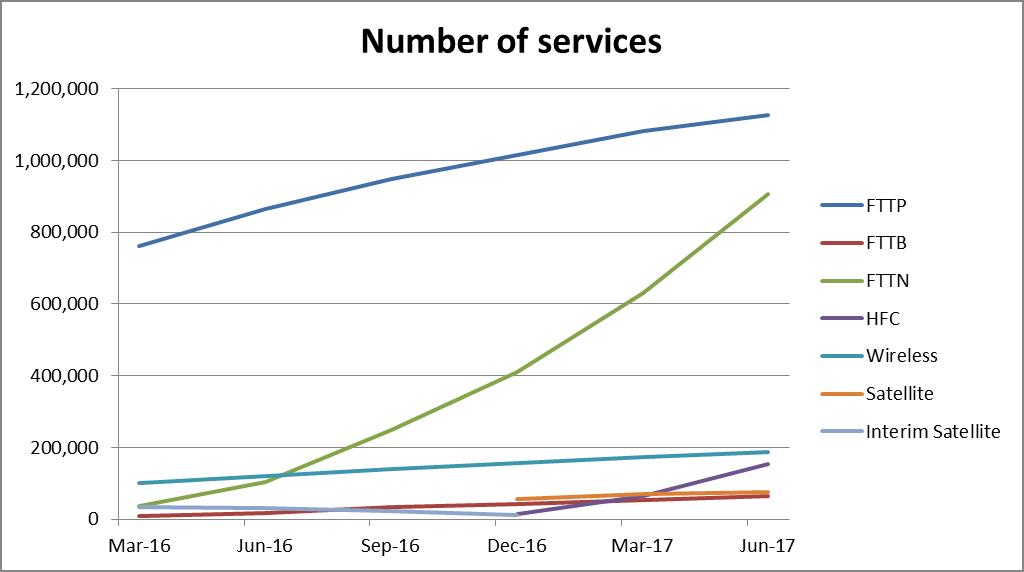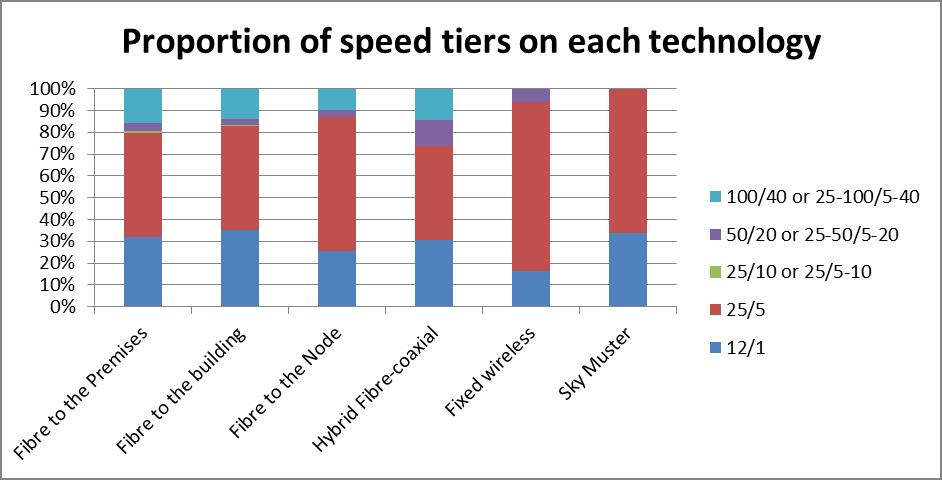Every quarter the ACCC releases a report on the services operating over the NBN wholesale network. The report provides some interesting insights into the NBN, here are some that we find useful.
Number of services
The report shows that over 2.5 million premises are connected to the NBN as at June 2017.
Fibre to the Premises (FTTP) is the primary technology used. The number of services over both Fibre to the Node (FTTN) and Hybrid Fibre-Coaxial (HFC) technologies are increasing at a fast rate. The graph below charts the number of services for each quarter by access technology.

Figure 1: Number of services by access technology1
Contracted capacity
Contracted capacity is an important factor in the quality and speed of services. Poor speeds are one of the most complained about issues over NBN, one reason for this could be a low amount of capacity2.
The ACCC reports reveal total capacity and can be used to average the capacity per premise. After over a year of fairly consistent provisioning (around 1Mbps per consumer), the most recent report (June 2017) shows an increase in the average amount of capacity per premises, both overall and for each state group (graph below). However, this is only an average - actual capacity will vary by Retail Service Provider and area.

Figure 2: Per end user provisioning3
Speed tiers
There are a number of speed tiers available over the NBN.
25/5Mbps is the most popular speed tier, with over half of all premises choosing this speed tier.
Premises using the Fixed Wireless technology are least likely to choose the slowest speed tier (12/1Mbps plans) while premises using the HFC technology are most likely to choose the higher speed tiers (50/20Mbps and 100/40Mbps), graph below.

Figure 3: speed tiers by access technology June 20174
Market Share
The report also provides insights into the market share of each access seeker by technology type.
Telstra has the highest market share, with one in every two NBN connected premises being with Telstra.
However, there is variation over each technology. The graph below shows the top access seekers by each technology.
![Market share of top access seekers Graph shows the market share of access seekers by each technology type. Each technology as a slightly different make up of access seekers. Telstra’s market share is strongest over FTTN technologies (nearly 59%) and weakest over HFC (40%) [Telstra do not offer Sky Muster satellite services]. APN has the biggest market share over Sky Muster Satellite service](/files/Pics/Market%20share%20of%20top%20access%20seekers.jpg)
Figure 4: Access seeker market share by technology5
Future of the report
The ACCC recently consulted on the future of this reporting. ACCAN is keen to see this reporting continued and for further information to be released. Read our submission here.
Download: ![]() nbn market report.docx406.98 KB
nbn market report.docx406.98 KB
Sources:
3. Taken from Table 2 (sum of contracted CVC capacity) divided by Table 6 total count of end users.
4. Table 1, limited to the 5 common residential speed tiers.

Comments powered by CComment